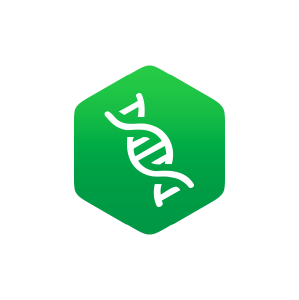9.11: Practice Test- Bone Tissue and The Skeletal System
- Page ID
- 34451
\( \newcommand{\vecs}[1]{\overset { \scriptstyle \rightharpoonup} {\mathbf{#1}} } \) \( \newcommand{\vecd}[1]{\overset{-\!-\!\rightharpoonup}{\vphantom{a}\smash {#1}}} \)\(\newcommand{\id}{\mathrm{id}}\) \( \newcommand{\Span}{\mathrm{span}}\) \( \newcommand{\kernel}{\mathrm{null}\,}\) \( \newcommand{\range}{\mathrm{range}\,}\) \( \newcommand{\RealPart}{\mathrm{Re}}\) \( \newcommand{\ImaginaryPart}{\mathrm{Im}}\) \( \newcommand{\Argument}{\mathrm{Arg}}\) \( \newcommand{\norm}[1]{\| #1 \|}\) \( \newcommand{\inner}[2]{\langle #1, #2 \rangle}\) \( \newcommand{\Span}{\mathrm{span}}\) \(\newcommand{\id}{\mathrm{id}}\) \( \newcommand{\Span}{\mathrm{span}}\) \( \newcommand{\kernel}{\mathrm{null}\,}\) \( \newcommand{\range}{\mathrm{range}\,}\) \( \newcommand{\RealPart}{\mathrm{Re}}\) \( \newcommand{\ImaginaryPart}{\mathrm{Im}}\) \( \newcommand{\Argument}{\mathrm{Arg}}\) \( \newcommand{\norm}[1]{\| #1 \|}\) \( \newcommand{\inner}[2]{\langle #1, #2 \rangle}\) \( \newcommand{\Span}{\mathrm{span}}\)\(\newcommand{\AA}{\unicode[.8,0]{x212B}}\)
Review the material from this module by completing the practice test below:
- storage of minerals
- protection of internal organs
- facilitation of movement
- fat storage
- dead calcified tissue
- cartilage
- the skeletal system
- dense, hard connective tissue
- store phosphate
- store calcium
- make blood cells
- move like levers
- an area of fat storage
- a point of attachment for muscles
- the hard portion of bone
- the cause of kyphosis
- hematopoiesis
- cartilage
- yellow marrow
- red marrow
- muscles and tendons
- bones and cartilage
- vitreous humor
- minerals and fat
- flat bones
- short bones
- sesamoid bones
- irregular bones
Sesamoid bones are found embedded in ________.
- joints
- muscles
- ligaments
- tendons
- irregular
- sesamoid
- flat
- short
- long bone
- sesamoid bone
- short bone
- flat bone
- counterweight
- resistive force
- lever
- fulcrum
- bone growth
- bone remodeling
- hematopoiesis
- shock absorption
- the metaphysis
- fat stores
- spongy bone
- compact bone
- periosteum
- epiphysis
- endosteum
- diaphysis
- osteoblasts and osteoclasts
- osteocytes and osteoclasts
- osteoblasts and osteocytes
- osteogenic cells and osteoclasts
- osteoblasts
- osteoclasts
- osteocytes
- osteoprogenitor cells
- Haversian systems
- Haversian canals
- lamellae
- lacunae
- canaliculi
- Volkmann’s canals
- trabeculae
- calcium salts
- a hole
- a facet
- a canal
- a fissure
- because it eventually develops into bone
- because it is semi-solid and flexible
- because it does not have a blood supply
- because endochondral ossification replaces all cartilage with bone
- They develop from mesenchymal cells.
- They are surrounded by osteoid.
- They travel through the capillaries.
- Formation of osteoid spreads out the osteoblasts that formed the ossification centers.
- They develop into osteocytes.
- They die in the calcified matrix that surrounds them and form the medullary cavity.
- They grow and form the periosteum.
- They group together to form the primary ossification center.
- the metatarsals
- the femur
- the ribs
- the flat bones of the cranium
- epiphyseal plate
- perichondrium
- periosteum
- medullary cavity
- in the medullary cavity
- beneath the periosteum
- in the epiphyseal plate
- within the metaphysis
- proliferation, reserved, maturation, calcification
- maturation, proliferation, reserved, calcification
- calcification, maturation, proliferation, reserved
- calcification, reserved, proliferation, maturation
- open and closed
- open and transverse
- transverse and greenstick
- greenstick and comminuted
- The bone pierces fat stores in the skin.
- The yellow marrow in the diaphysis is exposed and damaged.
- The injury triggers the body to release fat from healthy bones.
- The red marrow in the fractured bone releases fat to heal the fracture.
- the break occurs at an angle to the bone
- the broken bone does not tear the skin
- one fragment of broken bone is compressed into the other
- broken bone pierces the skin
- hyaline cartilage
- trabecular bone
- osteogenic cells
- osteoclasts
- compact
- lamellar
- spongy
- dense
- a right-handed pitcher will have thicker bones in his right arm compared to his left.
- a right-handed cyclist will have thicker bones in her right leg compared to her left.
- a broken bone will heal thicker than it was before the fracture.
- a bed-ridden patient will have thicker bones than an athlete.
- vitamin D
- vitamin K
- calcitonin
- fluoride
- carrots
- liver
- leafy green vegetables
- oranges
- estrogen and testosterone
- calcitonin and calcitriol
- growth hormone and parathyroid hormone
- thyroxine and progesterone
- estrogen and testosterone
- calcitonin and calcitriol
- estrogen and progesterone
- calcitonin and parathyroid hormone
- skeletal system
- endocrine system
- digestive system
- nervous system
- thyroxine
- calcitonin
- parathyroid hormone
- vitamin D
- thyroxine
- calcitonin
- parathyroid hormone
- vitamin D
Contributors and Attributions
CC licensed content, Shared previously
- Anatomy & Physiology. Authored by: OpenStax College. Provided by: Rice University. Located at: http://cnx.org/contents/14fb4ad7-39a1-4eee-ab6e-3ef2482e3e22@9.1. License: CC BY: Attribution. License Terms: Download for free at http://cnx.org/contents/14fb4ad7-39a...f2482e3e22@9.1

